How to Get a Dog to Sleep? [20 Strategies]
Getting your dog to sleep soundly and comfortably is vital for their overall health and well-being. As a responsible pet owner, you might have encountered situations where your furry companion struggles to settle down.
I get asked about bedtime chaos often as a dog expert. Luckily there are several strategies you can put into practice to help improve your dog’s sleep patterns and ensure they get the rest they need.
20 Strategies for Sleep
- Routine: Establish a consistent bedtime routine to signal winding down.
- Exercise: Daily exercise to ensure they’re physically tired.
- Comfortable Bed: A cozy bed in a quiet area for an inviting sleep environment.
- Limit Food and Water: Avoid late meals and water to prevent nighttime bathroom needs.
- Calming Supplements: Natural supplements like melatonin or CBD, with vet advice, for anxiety.
- Massage: Gentle massage to relax and ease into sleep.
- White Noise: Soft background noise to soothe and mask disruptions.
- Warmth: Provide warmth with blankets, especially in colder months.
- Potty Break: Last bathroom break right before bed.
- Training: “Go to bed” commands with positive reinforcement.
- Scent Therapy: Calming scents like lavender for relaxation.
- Music Therapy: Soft, calming music or dog-specific tunes.
- Interactive Toys: Puzzle toys in the evening for mental fatigue.
- Dress Rehearsal: Mimic your bedtime routine as a cue for them.
- Cool Down: Adjust room temperature or provide a cooling mat for comfort.
- Light Control: Use blackout curtains or a dim night light as needed.
- Heartbeat Pillow: For puppies, to mimic the comfort of littermates.
- Quiet Time: A “quiet hour” before bed to reduce stimulation.
- Chewing: A safe chew toy for evening stress reduction.
- Acupressure: Simple techniques to relax and prepare for sleep.
Why it matters…
The importance of a good night’s sleep extends to our pets as well, which is why it’s essential to understand and be aware of their sleeping habits.
Dogs’ sleep patterns may vary from breed to breed, but on average, they require around 12-14 hours of sleep per day. A dog’s age, activity level, and overall health can also impact how much rest they need.

Creating an ideal sleep environment for your canine companion is key to helping them achieve restorative sleep. This includes providing them with a comfortable bed, ensuring a consistent routine, and addressing any potential disturbances. By following some helpful tips, you will be better equipped to navigate your dog’s sleep needs and improve their quality of life.
Understanding Dog Sleep
Like humans, dogs also require sleep to maintain good health and well-being. The amount of sleep your dog needs varies depending on their age, breed, and activity level. In general, dogs sleep around 12-14 hours per day, with puppies and older dogs requiring more sleep.
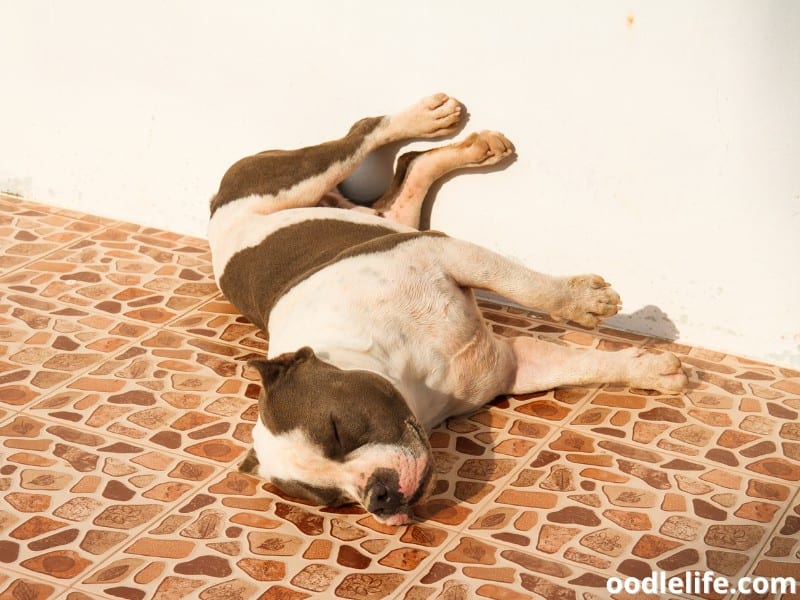
Puppies are rapidly growing and developing, which requires a significant amount of energy. As a result, they sleep between 18-20 hours a day. It is essential to provide a comfortable and quiet space for them to rest during these critical early stages.
Adult dogs, on the other hand, typically sleep for 12-14 hours a day. Their sleep patterns are influenced by factors such as their daily activity, breed, and overall health. Dogs that engage in regular exercise or have a more active lifestyle may require less sleep than sedentary dogs.
However, even if your dog seems to sleep a lot, it’s essential to ensure they’re receiving adequate mental and physical stimulation to maintain their overall well-being.
If you notice that your dog’s sleep patterns have suddenly changed, it could be indicative of an underlying issue. Factors to consider include stress, anxiety, illness, or even age-related changes. It’s crucial to consult with your veterinarian if you notice significant changes in your dog’s sleep behaviors.
To create an ideal environment for your dog to sleep well, consider the following:
- Provide a comfortable dog bed or designated sleeping area.
- Ensure the temperature of the room is comfortable and consistent.
- Limit noise disruptions, particularly during the nighttime.
- Establish a regular routine for feeding, exercise, and bedtime.
By understanding and catering to your dog’s unique sleep requirements, you’ll be better equipped to support their health and happiness throughout their lives.
Signs of Sleep Disorders in Dogs
Just as with humans, dogs can experience sleep disorders that may be caused by a wide range of factors, including anxiety, pain, stress, or underlying medical problems. If your dog is experiencing difficulty sleeping, it’s essential to recognize the signs and determine whether a more significant issue may be at play.
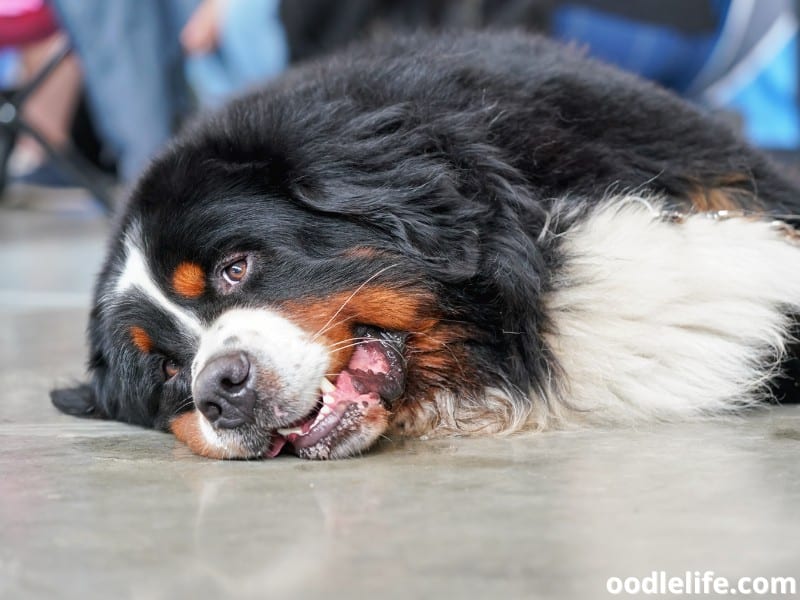
One common sleep disorder in dogs is insomnia, which may manifest as your dog being unable to fall asleep or staying awake for extended periods. This could be due to anxiety, such as separation anxiety when you’re not around, or stress caused by changes in their environment or routine.
Dogs experiencing pain from health issues like arthritis or an injury may also have trouble sleeping. In such cases, you might notice your pet shifting positions frequently or vocalizing in discomfort. Similarly, medical problems like diabetes or epilepsy can disrupt your dog’s sleep, leading to erratic sleep patterns or sudden waking throughout the night.
Cognitive dysfunction, or canine dementia, is another potential cause of sleep disturbances in dogs. As your furry companion ages, they may become confused or disoriented, and these cognitive changes can lead to disrupted sleep. Look for signs such as your dog waking up during the night and pacing, seeming disoriented, or exhibiting increased anxiety or clinginess.
If you notice any of these signs, it’s essential to consult with your veterinarian to determine the underlying cause and develop a treatment plan. Addressing the root of your dog’s sleep disorder can help improve their overall well-being and ensure they get the rest they need.
Medical Treatments to Aid Dog Sleep
Sometimes, despite your best efforts, your dog may struggle to fall asleep or stay asleep. In such cases, consulting with a veterinarian is crucial. They can help determine the underlying issue and recommend appropriate treatments for your dog.
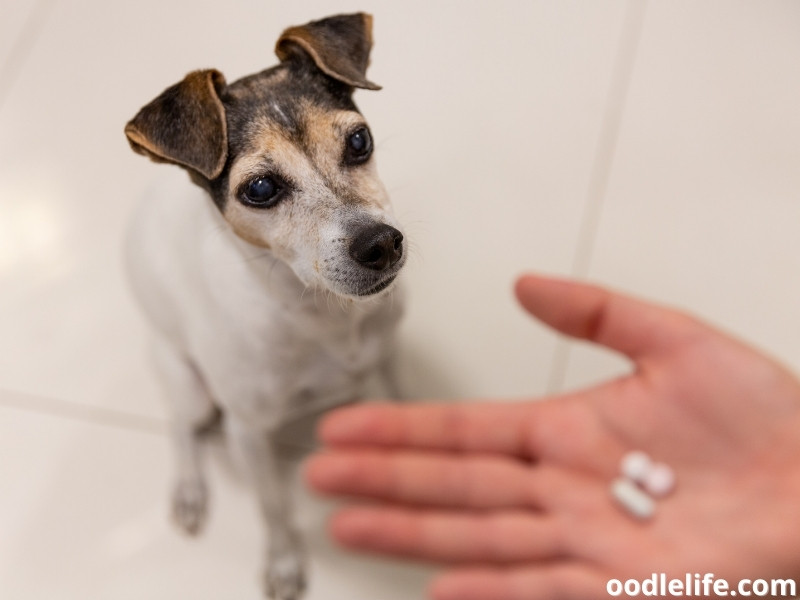
Some common medical treatments to aid your dog’s sleep include melatonin and prescription medications.
Melatonin is a natural hormone that regulates sleep patterns in both humans and dogs. It’s available over-the-counter and often used to help dogs with sleep disorders or anxiety issues. Before giving your dog melatonin, it’s important to talk to your veterinarian about the appropriate dosage.
The dosage depends on your dog’s size and the specific issue you’re trying to treat. Typically, melatonin is considered safe for dogs, but it’s still essential to get your vet’s approval and guidance.
Prescription medications may be required for more serious sleep-related issues in dogs. Again, it’s crucial to consult with a veterinarian to determine if prescription medication is necessary and which type of medication is best suited for your dog. Some common prescription medications to treat sleep disorders in dogs include trazodone, alprazolam, and gabapentin.
These medications should always be administered according to your veterinarian’s directions and closely monitored for any side effects.
In summary, if your dog is having difficulty sleeping, it’s best to seek advice from a veterinarian. They can help determine the cause and recommend a course of action, which may include melatonin, prescription medication, or other treatments. Always follow your vet’s guidance and monitor your dog closely for any signs of improvement or adverse reactions.
Optimizing The Sleep Environment
Creating the perfect sleep environment for your dog is essential to ensure they get the rest they need. A comfortable and quiet space will help your furry friend feel safe and relaxed, allowing them to drift off into a peaceful slumber.
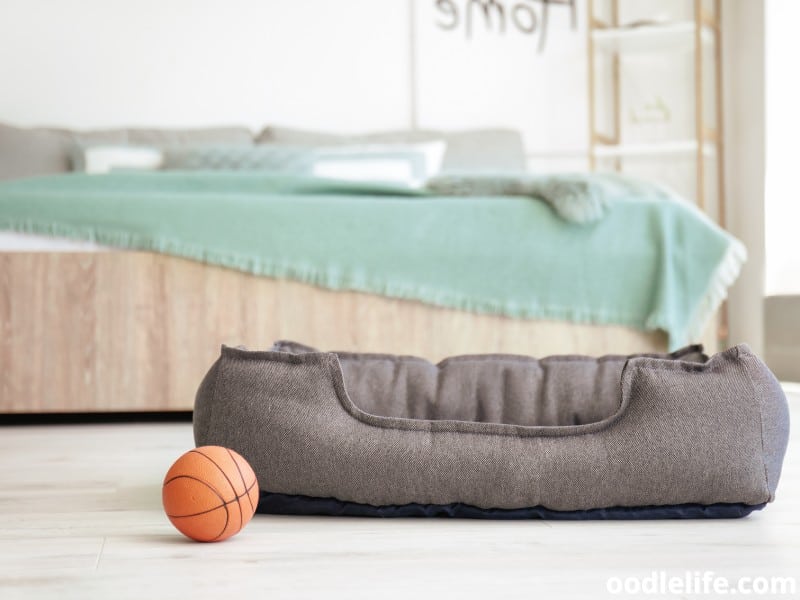
First and foremost, invest in a high-quality dog bed. The best dog bed for your pooch would be one that provides adequate support and comfort. You might consider an orthopedic dog bed if your dog is older or has joint issues.
These beds are designed with memory foam or egg-crate foam to contour to your dog’s body, helping to alleviate pressure points and provide the maximum comfort possible.
Next, find a quiet spot in your home to place your dog’s bed. This area should be free from excessive noise or distractions. If you live in a busy household, you may want to designate a specific room as your dog’s sleeping area, away from the hustle and bustle.
In doing so, your dog will associate the bed with rest and relaxation, making it easier for them to settle down when it’s time to sleep.
To further minimize noise within your dog’s sleep environment, you could use white noise machines or fans to drown out any potential disturbances. This can be especially helpful if your furry friend is sensitive to sounds like traffic. This type of noise may play a comforting role for dogs used to these sounds, which will help them feel at ease.
Temperature also plays a crucial role in optimizing your dog’s sleep environment. Dogs usually prefer cooler temperatures, so ensure that their sleeping space isn’t too warm. In the summer months, you can place your dog’s bed near a window or a fan to provide a cool breeze.
Conversely, during winter months, it’s essential to make sure your dog’s bed is adequately insulated and off cold surfaces, like tile or hardwood floors.
In summary, providing a comfortable dog bed, reducing noise, and maintaining ideal temperatures are key factors in optimizing your dog’s sleep environment. This effort will lead to healthy sleep patterns for your furry friend, ensuring they stay happy, well-rested, and ready for adventure.
Behavioral Techniques to Encourage Sleep
If you’re trying to help your dog sleep, behavioral techniques can be highly effective. Utilize your role as a trainer to improve your dog’s sleep habits by considering the following strategies:
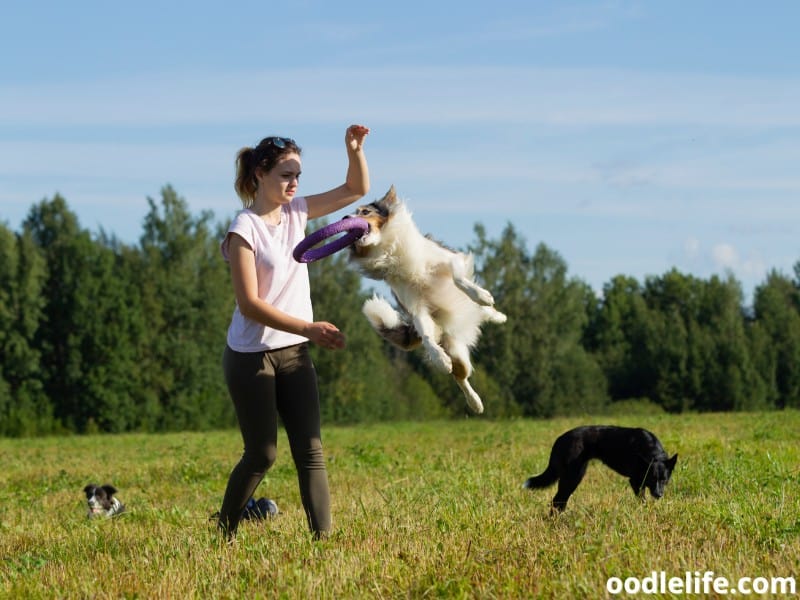
First, make sure your dog gets enough exercise during the day. Regular playtime, like fetch or tug-of-war, and at least 30 minutes of outdoor activity can tire your dog out and make them more inclined to sleep. As a rule of thumb, a tired dog is a sleepy dog.
Next, pay attention to your dog’s evening routine. Set a consistent bedtime and create a “wind-down” period for your dog. This can include low-energy activities like gentle petting or brushing your dog’s fur, which will help them relax and prepare for sleep.
It’s also important to create a calm sleeping environment for your dog. Make sure their bed or crate is comfortable and free from distractions like noise or light. You can try adding some of their favorite toys or a piece of your clothes to their bed, to give them a sense of familiarity and comfort.
Another technique to consider is using positive reinforcement. Reward your dog with treats or praise when they settle in their bed and remain calm. Gradually increase the time they spend in their sleeping space before giving rewards, so they learn to associate their bed with relaxation and sleep.
Finally, avoid stimulating activities right before bedtime. High-energy games or intense training sessions can leave your dog excited and less likely to sleep. Instead, reserve these activities for earlier in the day and encourage calm behavior in the hours leading up to bedtime.
By incorporating these behavioral techniques into your dog’s routine, you’ll be setting your furry friend up for healthy and restful sleep. Remember, consistency is key, and with time and patience, both you and your dog will benefit from a regular sleep schedule.
Effects of Diet and Exercise on Dog Sleep
A well-balanced diet and regular exercise can significantly improve your dog’s sleep. When you provide your dog with a healthy lifestyle, it ensures they have the energy to enjoy their day and promotes relaxation at night.

Incorporating exercise into your dog’s daily routine has a variety of benefits for their sleep patterns. When you take your dog for a walk or engage in playtime, it helps tire them out, making them more likely to fall asleep at night. Aim for consistent exercise throughout the day, and try to avoid heavy workouts right before bed.
Instead, engage in lighter activities like a leisurely walk in the evening. This can help establish a calming evening routine, signaling to your dog that bedtime is approaching.
Paying attention to your dog’s diet is just as important as focusing on their exercise routine. Feed your dog a well-balanced meal containing the right amount of nutrients for their size, breed, and age. Large meals immediately before bed can cause digestive problems, making it difficult for your dog to sleep well.
Aim to feed your dog a few hours before bedtime, giving them ample time to digest their food.
Here are some tips to help ensure your dog’s diet and exercise routine contribute to quality sleep:
Consistency: Establish a regular exercise and feeding schedule for your dog. This helps create a routine that they can rely on, allowing their body to adjust and anticipate sleep.
Portions: Be mindful of portion sizes when feeding your dog. Overfeeding can lead to weight gain and other health problems, which can negatively impact their sleep.
Work with your vet: Consult your veterinarian to determine the optimal diet and exercise plan for your dog, considering factors such as breed, size, age, and energy levels.
By maintaining a healthy diet and exercise routine for your dog, you can help ensure they get the rest they need to be happy and energetic during the day. Your efforts will lead to a well-rested canine companion who will have improved overall health and sleep quality.
Other Tools to Aid in Canine Sleep
Adaptil is a product designed to help dogs relax and sleep more comfortably. It uses synthetic pheromones that mimic the natural ones released by a mother dog to soothe her puppies. These pheromones can help reduce stress in dogs, making it easier for them to settle down for a good night’s sleep.

You can use Adaptil in the form of diffusers, sprays, or collars to create a calming environment for your dog.
Calming music is another tool that can help your dog sleep more soundly. Just like humans, dogs can also benefit from soothing background music to help them relax. Look for dog-specific calming music or playlists that feature gentle, instrumental tunes.
Playing this type of music at a low volume in the background can provide a relaxing ambiance for your dog and encourage them to drift off to sleep.
Incorporating puzzle toys into your dog’s bedtime routine can also be beneficial. Many dogs struggle to fall asleep because they have excess energy. Engaging your dog in a stimulating, yet calming puzzle toy before bedtime can help burn off that extra energy and make it easier for them to fall asleep once it’s time to rest.
Choose puzzle toys that are challenging enough to hold your dog’s interest, but not so difficult that they become frustrated.
Remember, every dog is unique, and what works for one might not work for another. It’s essential to observe your dog’s specific needs and behavior to determine which tools or techniques will be most effective in helping them get a good night’s sleep. Remain patient and consistent, as it may take some time for your dog to adjust to these new sleeping aids and routines.
Potential Complications If Your Dog Can’t Sleep
If your dog is having trouble sleeping, it could be an indication of underlying issues that require your attention. Let’s discuss some potential complications that can arise if your dog can’t sleep well.

Medical issues: A dog’s inability to sleep may be caused by medical conditions such as allergies, gastrointestinal issues, or even the onset of a more severe illness. For example, a dog with a skin allergy may be too itchy to sleep comfortably, or a dog experiencing gastrointestinal distress may feel the need to constantly move around. In such cases, it is essential to consult with your veterinarian to identify and address the underlying issue.
Bathroom needs: Sometimes, your dog might be unable to sleep due to a simple need to go to the bathroom. If your dog is showing signs of restlessness or discomfort, try taking them outside for a bathroom break. If this does not resolve the issue and your dog continues to have problems sleeping, it might be time to look into other potential causes.
Anxiety: Dogs may experience anxiety for a variety of reasons, such as changes in routine, unfamiliar environments, or separation from their human companions. Anxiety can lead to sleep disturbances and may require behavioral modification or even medication to address. One common example is a dog that becomes anxious when left alone, leading to excessive pacing or whining during the night.
In this case, working with a professional dog trainer or behaviorist to address the root cause of the anxiety may be necessary.
Pain: Pain can be a significant obstacle to a restful night’s sleep for your dog. Conditions such as arthritis, dental issues, or injuries can make it challenging for your dog to get comfortable and sleep through the night. If you suspect your dog is in pain, a visit to the veterinarian is essential for proper diagnosis and treatment.
In conclusion, keep an eye on your dog’s sleep habits and note any sudden changes or disturbances. By addressing any potential complications early on, you can ensure that your furry companion stays happy, healthy, and well-rested.
Getting Involved to Help Your Dog Sleep
As a dog owner, you can play a significant role in helping your dog get a good night’s sleep. By creating a comfortable environment and establishing a consistent sleep routine, you can ensure that both you and your furry friend enjoy some well-deserved rest.
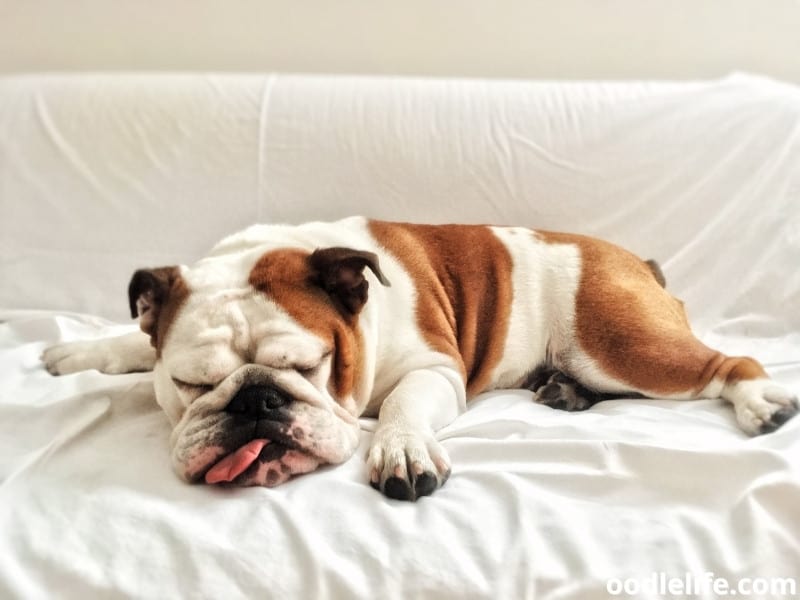
One crucial aspect of aiding your dog’s sleep is setting up a comfortable and quiet sleeping area. This could be a designated spot in your bedroom, a cozy dog bed, or a crate. Make sure the sleeping area is well-padded, clean, and free from any distractions such as noise or light.
A familiar blanket or toy can also provide assistance in making your dog feel at ease.
Additionally, engaging your dog in regular exercise can contribute to a better sleep pattern. Walks, playtime in the park, and interactive games all help in reducing pent-up energy during the day. Either as a dog owner or by enlisting the help of a dog walker, you can ensure your dog gets the physical activity needed to encourage a restful sleep.
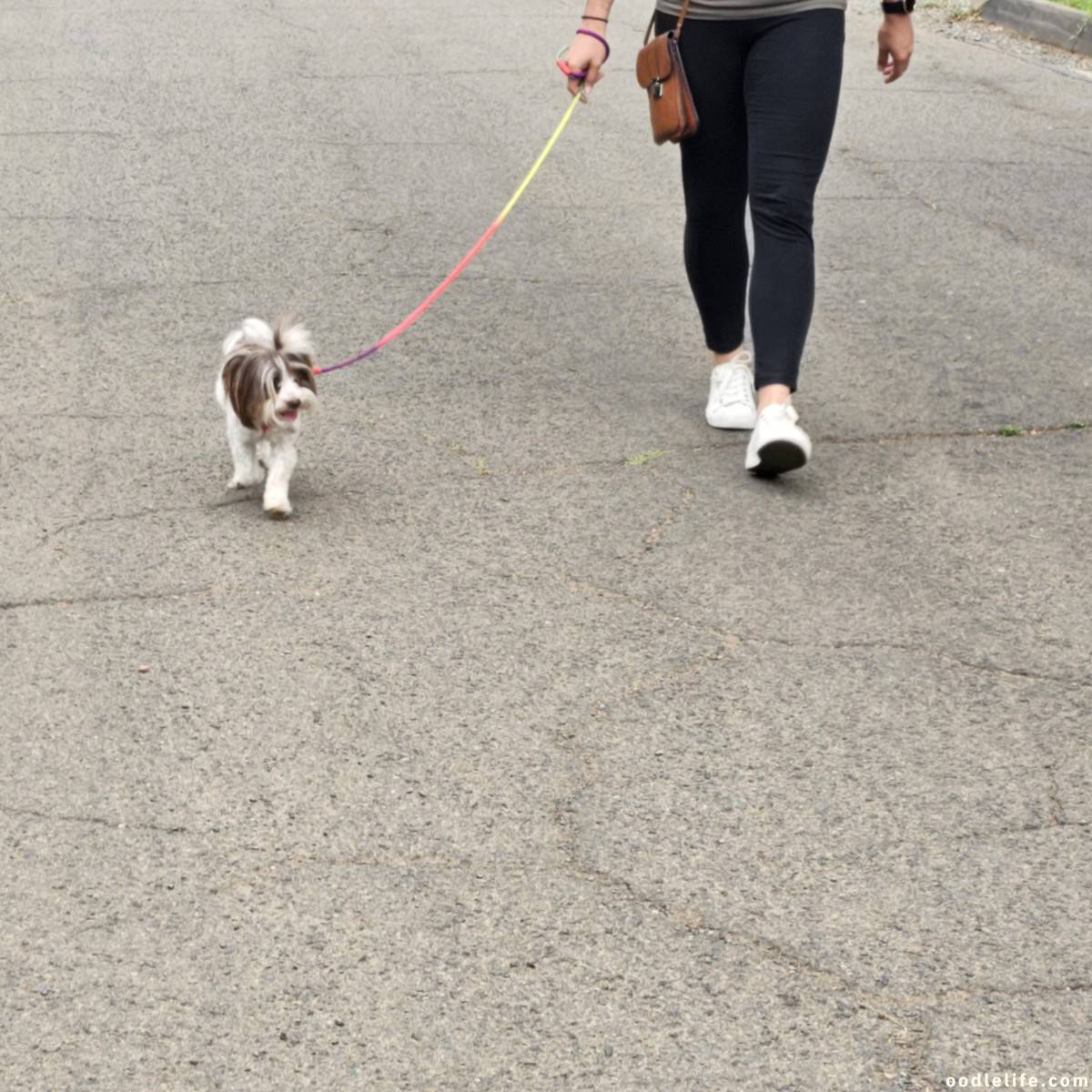
It’s also important to establish a consistent bedtime routine for your dog. Try to feed and walk your dog at the same time every day, gradually winding down as bedtime approaches. This routine will signal to your dog that it’s time to sleep, making the transition smoother and quicker.
Avoid indulging in high-energy activities just before bed, as this may lead to overexcitement and difficulty falling asleep.
If your dog struggles with anxiety or stress, implementing calming techniques can make a world of difference. Gentle massages, calming scents like lavender, or even playing soothing music can help your dog relax and ease into a restful sleep. Remember, a calmer dog is more likely to have a better quality sleep.
In conclusion, as a committed dog owner or dog walker, your involvement in creating a sleep-friendly environment, establishing a consistent routine, and ensuring sufficient exercise for your dog is essential in promoting healthy sleep habits. By following these tips, you’ll be well on your way to helping your dog get the rest they need.